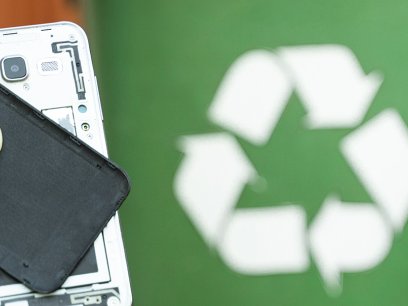
There has been a push in recent years for Americans to make the switch to phosphate-free detergents, soaps, and household cleaners. By 2010, 17 states banned the sale of dishwasher detergents that contain high levels of phosphates, the phosphorus-containing compound in detergents: Illinois, Indiana, Maryland, Massachusetts, Michigan, Minnesota, Montana, New Hampshire, New York, Ohio, Oregon, Pennsylvania, Utah, Vermont, Virginia, Washington, and Wisconsin. Though early efforts at limiting phosphates left some consumers dissatisfied, these detergents may be worth reconsidering. Phosphate mines are projected to dry up by the end of this century, and the phosphates in these products can have negative impacts on the environment.
Phosphorus is a naturally occurring nutrient that is necessary for plant growth. In aquatic ecosystems, phosphorus along with another essential nutrient, nitrogen, supports the growth of algae and aquatic plants, which provide food and habitat for fish and other organisms. However, high nutrient levels can jeopardize water quality by fueling overgrowth of algae – or algal blooms – which can have serious impacts on the environment, human health, and our economy.
- Overgrowth of algae can create low-oxygen or anoxic conditions, also referred to as “dead zones,” as the algal blooms begin to undergo chemical decomposition. Like us, fish and other aquatic organisms require oxygen to live, and they will leave the affected area in favor of more oxygen-rich waters or die.
- Some algal blooms can produce toxins that can endanger people and wildlife.
- The cost and difficulty to municipalities – and taxpayers – of treating drinking water increases. Cities are required to adhere to state water quality standards that limit the amount of phosphorus discharged from wastewater treatment plants.
- Algal blooms hurt local economies as many industries, like tourism, depend on clean water.
Why Dishwasher Detergents?
So why focus on dishwasher detergents? Some dishwasher detergents contain up to 9% phosphorus. This source can account for between 9% and 34% of the phosphorus found in municipal wastewater, which can eventually be carried to ponds, rivers, lakes, and streams. In an attempt to curb this source of nutrient pollution, many of the laws that took effect in 2010 limit phosphorus in household dishwasher detergents to 0.5%. Already industries are getting innovative in reformulating their products with phosphate alternatives. Check out EPA’s Safer Choice database to find detergents and other products that perform well and are safer for human health and the environment.
Detergents aren’t the only source of phosphates in aquatic ecosystems – phosphates from fertilizer runoff are also a major problem. Fertilizer is particularly prone to washing off the land as runoff when applied right before rainfall or snowmelt, or when lawns or crops cannot absorb the nutrients. At least 11 states ban phosphorus fertilizer use or sale including Illinois, Maine, Maryland, Michigan, Minnesota, New Jersey, New York, Vermont, Virginia, Washington, and Wisconsin. Learn more about nutrient pollution and find tips from EPA about how to reduce nutrient pollution in your home, yard, and community.
Sources
- Connecticut General Assembly. 2012. “State Laws Banning Phosphorus Fertilizer Use.” Accessed June 29, 2016. https://www.cga.ct.gov/2012/rpt/2012-R-0076.htm.
- Consumer Reports. 2010. “New Detergents Arrive.” Accessed June 29, 2016. http://www.consumerreports.org/cro/magazine-archive/2010/september/home-garden/low-phosphorous-dishwasher-detergents/overview/index.htm.
- New York State Department of Environmental Conservation.2010. “2010 NYS Law Bans Sale of Phosphorus Containing Dishwasher Detergents.” Accessed June 29, 2016. http://www.dec.ny.gov/docs/water_pdf/lawbanphos.pdf.
- Ouinn, Ian. 2014. “P&G Detergents to Go Phosphate-Free.” TCE: Focus on Surfactants 2014 (7). doi:10.1016/S1351-4210(14)70178-7.
- O'Driscoll, Cath. 2010. “Phosphate-Free Detergents.”Focus on Surfactants. (2010): 8-8. doi:10.1016/S1351-4210(11)70048-8.
- US EPA. 2016. “Harmful Algal Blooms.” Accessed June 29. https://www.epa.gov/nutrientpollution/harmful-algal-blooms#cause.
- US EPA. 2016. “The Problem.” Accessed June 29. https://www.epa.gov/nutrientpollution/problem.
- US EPA. 2016. “Sources and Solutions.” Accessed June 29. https://www.epa.gov/nutrientpollution/sources-and-solutions.


